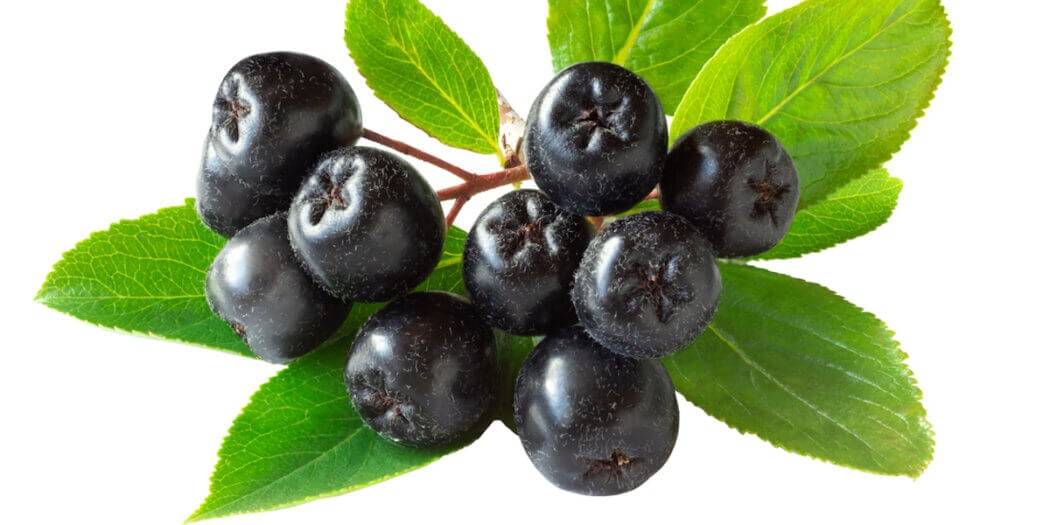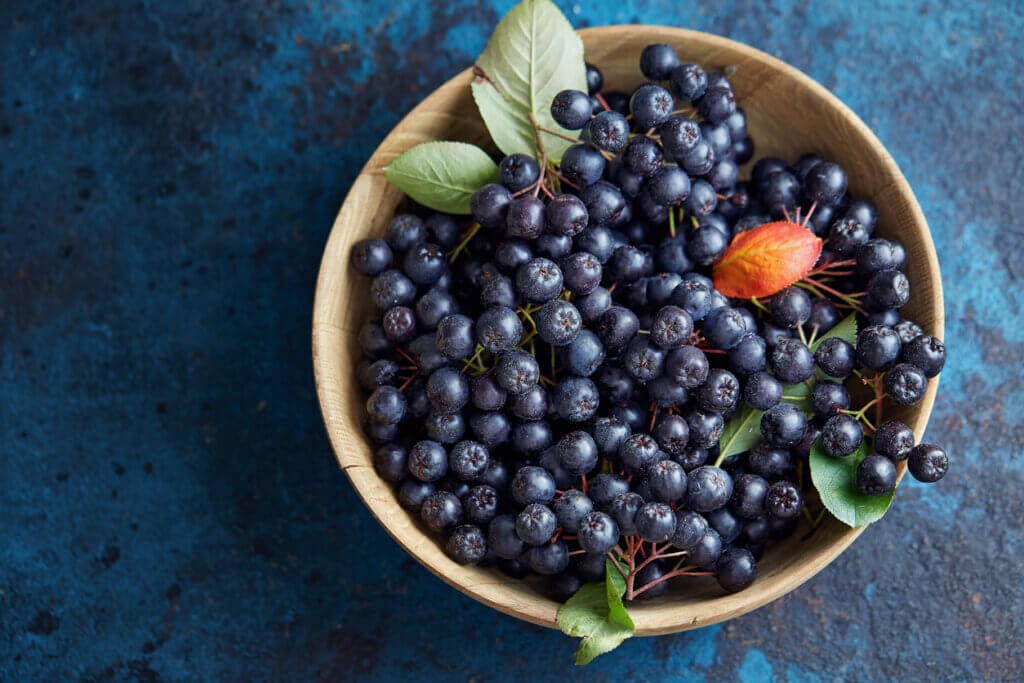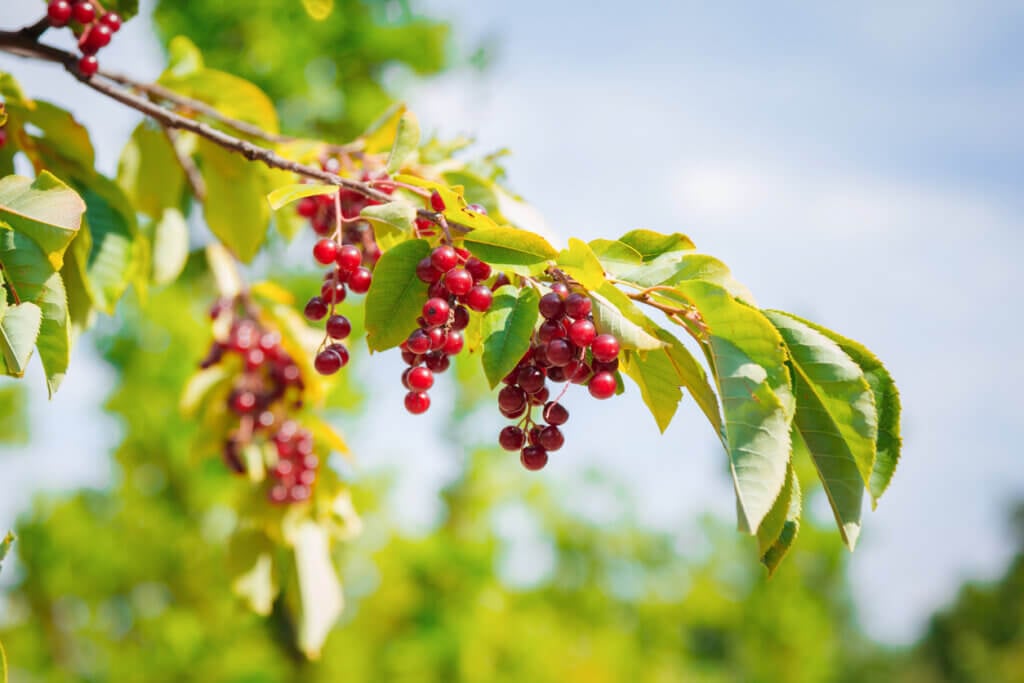Grocery Guides
Chokecherries: All You Need to Know

What are chokecherries?
Chokecherries are a common name for the fruits that sprout from the Prunus Virginiana and can also go by the name bitter-berry, chokecherry, Virginia bird cherry, or western chokecherry. These cherries are related to other varieties of cherries and plums and are a favorite snack for birds. These berries are mostly sweet with a slight acidic bite. They make excellent jams or jellies, homemade wine, or even raw snacks, but only when they are fully ripe. Otherwise, they can be very bitter or sour.
Where did chokecherries originate from?
There is reason to believe that chokecherries were largely harvested in Eurasia at around 4,000 to 5,000 B.C. Later, the chokecherry would be imported to England around 1629. The chokecherry was then cultivated in North America as an orchard crop in 1724. Chokecherries are native to North America, and some indigenous peoples gathered them as a food source.

What are the nutritional benefits of eating chokecherries?
The chokecherry is somewhat of a superfood, containing many vitamins and minerals that the body needs. The chokecherry is high in:
- Vitamin A
- Vitamin B6
- Vitamin B9
- Vitamin K
- Quinic acid
- Fiber
- Potassium
- Manganese
Chokecherries are also low in:
- Fat
- Saturated fat
- Cholesterol
- Sodium
For every 100 grams of raw chokecherries, this serving provides approximately 34 grams of carbohydrates, 17 grams of fiber, about 3 grams of protein, 2 milligrams of sodium, 1 milligram of fat, and approximately 62 grams of water. This serving size contains only 156 calories.
It is important to note that chokecherry seeds contain a cyanide compound, which can be toxic if eaten raw in large quantities. When eating or working with fresh chokecherries, remove the seeds to avoid their adverse health effects.
How are chokecherries grown?
Chokecherry plants can grow up to 10 -15 feet high on wild, tree-like shrubs with no thorns. They can be found in the wild in North America, sometimes along the edge of woods or roadsides. They are also grown in orchards where they receive full sun. The chokecherries typically form in clusters on the plant, which makes them easy to harvest. When the berries first begin to form, they are a light green color, but quickly progress to yellow, then a bright red before finally hitting a deep red, or even a plum color, when ripe and ready to be consumed. Chokecherries have large, toxic seeds in their centers that should be removed before consumption. Chokecherry season in North America usually occurs around mid-August through early September.

What is the shelf life of chokecherries?
Like other berries and fresh fruits, chokecherries do not have a long shelf life when left unattended. Ripe cherries should be consumed as quickly as possible for the best flavor; otherwise, they may last a couple of days maximum. Fortunately, there are ways of storing chokecherries so that the berries last longer. To stretch out the chokecherry’s shelf life, consider refrigerating or freezing your berries.
What should I look for when buying chokecherries at the grocery store?
When shopping for fresh fruit and berries with Instacart, be sure to include clear instructions for your shopper to follow when picking out your produce. For chokecherries specifically, you’ll want to snag a cluster of these berries that are bright, plump, and about 1/4 to 1/2 inch around. Chokecherries grow in clusters similar to that of grapes and have one large seed at their center. Ripe chokecherries are dark red, plum, or even appearing as black in some instances. Bright red berries are not yet mature, but you may want to let your shopper know that this is what you’re looking for if you’re not rushing to use the chokecherries. It is worth noting that chokecherries are typically in season from mid-August to early September.
How to store chokecherries
If you are not planning to eat your fresh chokecherries immediately, it is a good idea to store them properly. Secure your chokecherries in an airtight container or bag to draw out their shelf life. This will prevent moisture from seeping into the berries, causing mold. Don’t wash them before storage, as the extra water may introduce decay. Place the chokecherries in the refrigerator and keep them at around 37 – 41 degrees Fahrenheit. This should protect the chokecherries for up to a week while placing the chokecherries in the freezer will preserve them for up to two years.
How to tell if chokecherries are bad
Chokecherries, like other fresh fruits and berries, can spoil quickly. This is especially true if left unattended or in humid, warm, or room-temperature environments. A few common signs that your chokecherries are no longer safe for consumption may include the following:
- They are soft, shriveled, or blemished.
- They display clear signs of fungal growth, mold, or rot.
- They give off a sour or putrid smell.
- The taste is no longer sweet but off in some way.
What can I substitute for chokecherries?
While chokecherries have a unique flavor, there are many close substitutions available to you. Many kinds of berries also provide a strong flavor and even a slight acidic bite similar to chokecherry. Some substitutions worth considering include:
Ready to try chokecherries? Conveniently shop for fresh produce with Instacart
If you’re ready to incorporate chokecherries into your next dish, Instacart offers a convenient way to shop for your produce. Select your items, leave instructions for your shopper to follow when at the grocery store, and schedule a pickup or drop-off time that works best for you.
Most Recent in Grocery Guides

Grocery Guides
15 Tasty Ice Cream Alternatives: Yogurt, Shaved Ice & More
Ice cream has been a beloved treat for generations. With its rich flavors and smooth texture, it’s no wonder people choose ice cream when looking for dessert. However, as dietary restrictions and health consciousness evolve,…...
Apr 10, 2024![When Is Artichoke Season? [Recipes + Guide]](https://www.instacart.com/company/wp-content/uploads/2024/03/when-is-artichoke-season-hero-447x224.webp)
Grocery Guides
When Is Artichoke Season? [Recipes + Guide]
Quick Answer When is artichoke season? In North America, artichoke season is from March to May, with smaller batches in October. Artichokes are a unique and versatile vegetable known for its tender heart and delicate…...
Mar 6, 2024
Grocery Guides
Brown Eggs vs. White Eggs: How Are They Different?
Eggs are an essential ingredient in many sweet and savory recipes. The possibilities are endless when it comes to using these protein-packed powerhouses — you can scramble, fry, boil or poach eggs, or you can…...
Feb 24, 2024

 Squash – All You Need to Know | Instacart Guide to Fresh Produce
Squash – All You Need to Know | Instacart Guide to Fresh Produce  Ghost Pepper – All You Need to Know | Instacart Guide to Fresh Produce
Ghost Pepper – All You Need to Know | Instacart Guide to Fresh Produce  Sprouts – All You Need to Know | Instacart Guide to Fresh Produce
Sprouts – All You Need to Know | Instacart Guide to Fresh Produce 

